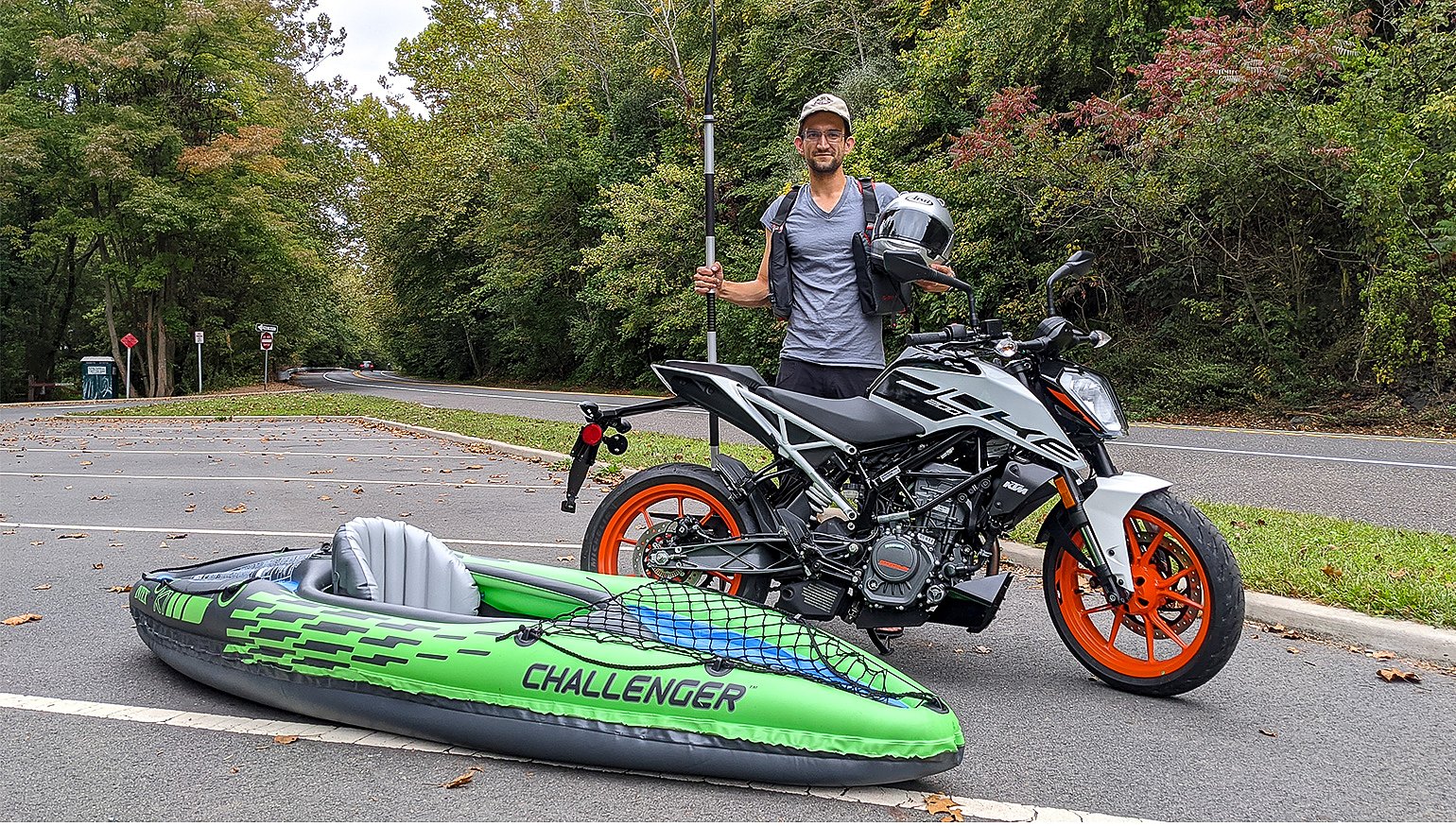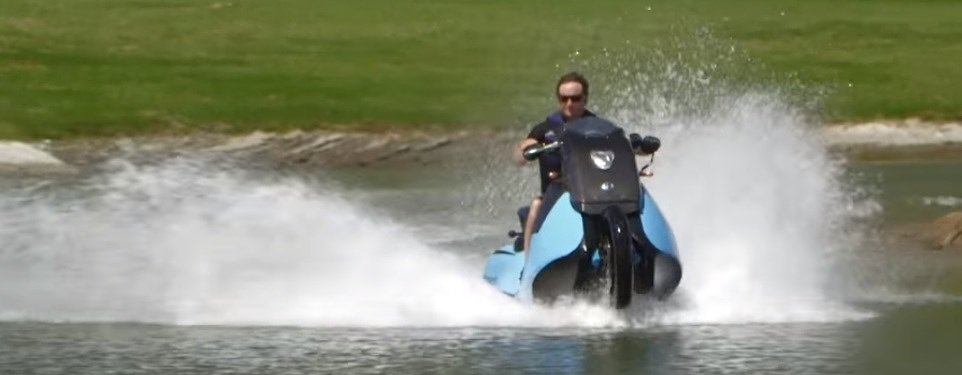Is there a better time to ride Pennsylvania’s roads than early fall?
Our spring has mild temps, too, but late September and October are sublime as post-summer heat relief meets the beginnings of fall color. Incidentally, this time of year is made for kayaking, too, and for all the same reasons. If only there were some way to combine riding and paddling for a grand day out… Fun roads often follow water, right?
I’m sure I’m not the first to do this, but I’ve never seen a write-up on how to do it, so here’s moto-kayaking for your entertainment and education.
Let's go moto-kayaking
I’ve owned a few kayaks over the years, and my current setup is intended for large rivers and multi-day trips, although it’s too big for quick jaunts, and its excellent tracking makes it a bear to swing around in smaller bodies of water. Seeking something smaller and more casual, I discovered that inflatable kayaks are way better than I expected, and they’re not too expensive, either. Some research led me to the popular Intex Challenger K1. When the box arrived, I knew I could strap this glorified inner tube to my motorcycle for some good times.
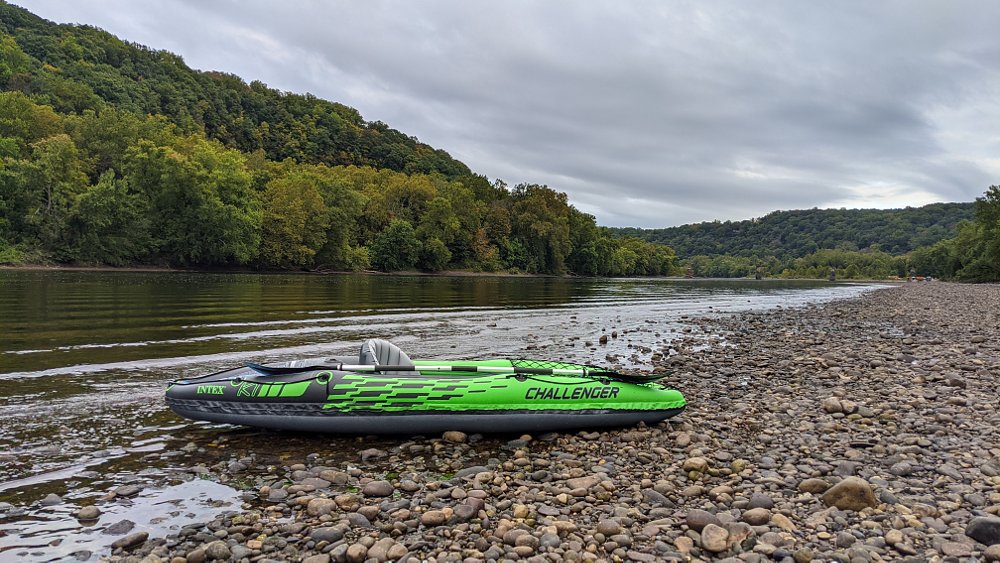
Two disclaimers: First, I bought my K1 with my own money. Prices currently fluctuate between $100 and $175. Intex didn’t send it to me, or contact me at all. And second, I bought the K1 just after the pandemic started, when they were both cheaper and more available. I guess a lot of people decided to take up boating in the last few months.
The Challenger is the most bare-bones inflatable kayak I could find worth buying, and now that I’ve moto-kayaked a few times, I’ll probably pony up for something nicer once the Intex pops. Until then, my whole kit fits into an 17-inch-by-23-inch bag that weighs 25 pounds. The Challenger includes the boat, the pump, an inflatable seat, a patch kit, a clip-in skeg, a wimpy floatation device, and a collapsible paddle. I tossed the included pump and PFD, replacing them with an Intex DoubleQuick III pump (inflate/deflate ability, better construction) and my Onyx life vest (better safety). I also added a camping groundcloth to my bag for poke-free setup and teardown. My whole kit, plus a couple of good ratchet straps, should run you $250 or less, which looks pretty good against the cost of a new kayak. Intex will actually issue a certificate of origin for their inflatable kayaks if you need it for registration.
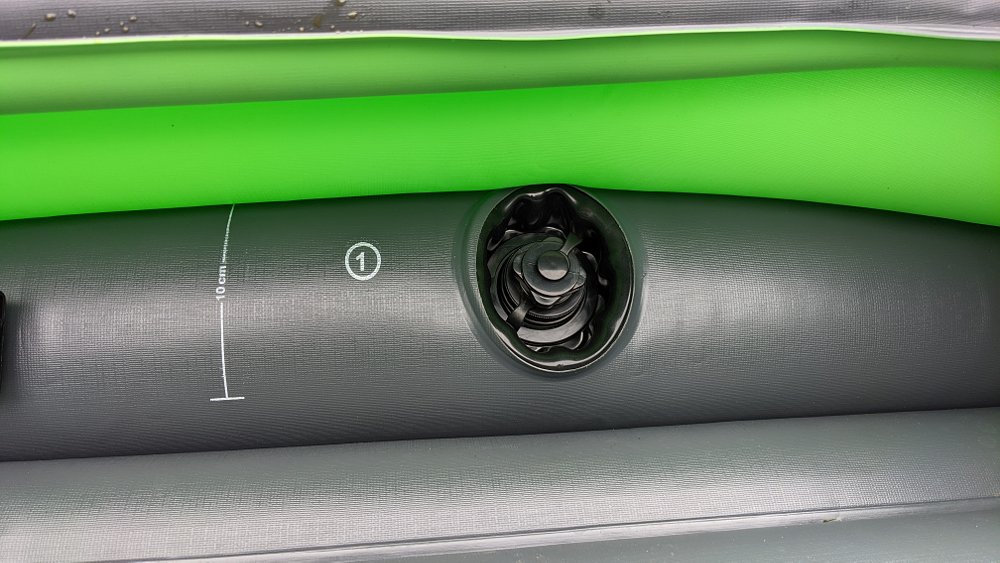
The system worked well all summer, and for my first throttle/paddle of the fall season, I snapped some photos to show you how it’s done. My brother Johnny saw how much fun my K1 was, bought himself the larger Explorer K2 model, and joined me for a day trip to the Delaware River.
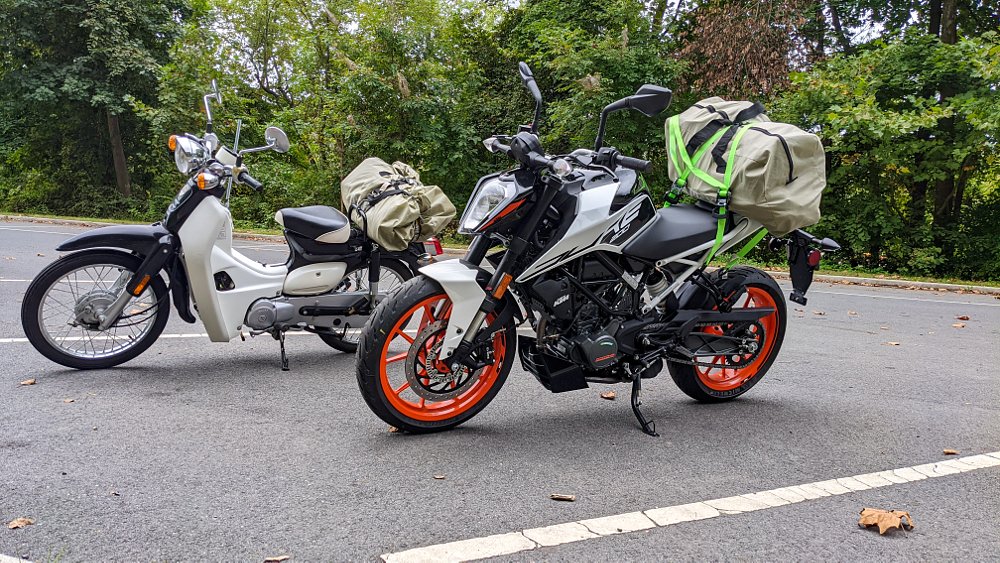
Planning a moto-kayaking tour
Planning a kayak and ride day can get a little complicated, logistically speaking. Your boat and your gear need to safely fit on the bike, of course, and then you’ve got other considerations once you reach the water, like securing your bike, stowing your riding gear, and keeping phones/wallets/smart keys dry. If you’re on moving water, how will you get back to your bikes if you’re paddling downstream? Take some time to sort these details out, and don’t be afraid to rely on local friends. They can shuttle you back up to your starting point, or let you stash your gear at their place while you’re out. You can also park one bike at your exit point, shuttling with your passenger seat. Alternatively, get a terrific workout by paddling upstream, then floating back down to your original starting point for the simplest river trip.
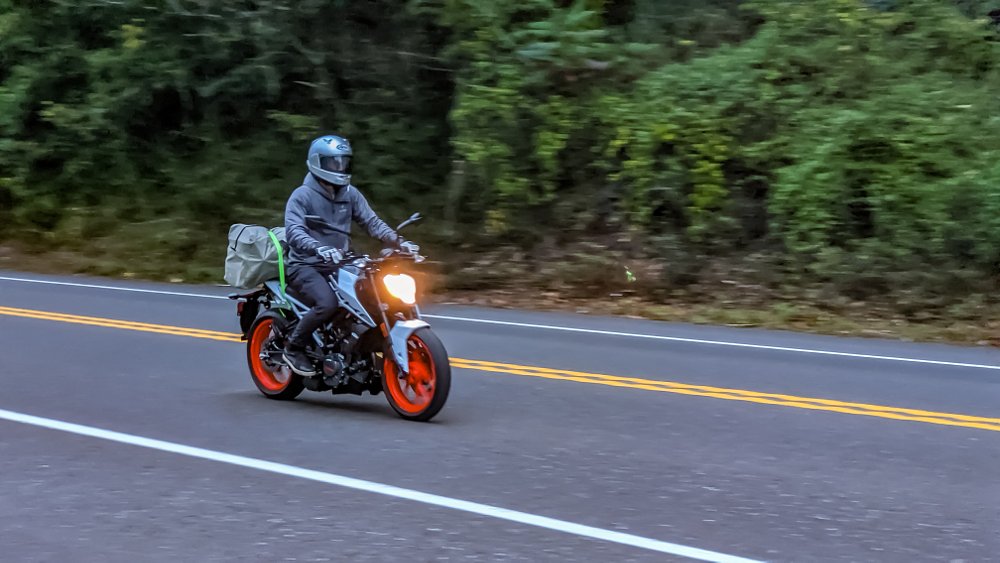
We kept things simple with the smallest bikes we had on hand to show that anyone can try moto-kayaking, as long as you’ve got somewhere to strap your gear. I mounted my K1 to my 2020 KTM 200 Duke test bike, while my brother fit the big K2 on a 100 cc scooter. He did split the load between his luggage rack and a backpack, but it all fit.
Ride to the river
As you might expect, with 300 cc between the two of us, the motorcycling portion of our afternoon wasn’t anything wild, just a ride out to the river road, across one of the Delaware’s many scenic bridges, and down the Jersey side to our access point. Summer crowds gave way to emptier roads and fewer waves as the weekend’s cooler weather rolled in. We spotted a Gold Wing, a Road Glide, and a vintage Vespa cruising together. Nice. A very happy man in a pristine Volvo brick flashed a thumbs up to the scooter and its comical cargo. These river roads are just right for a chilled-out ride, and you can always branch out into the twistier topography nearby.
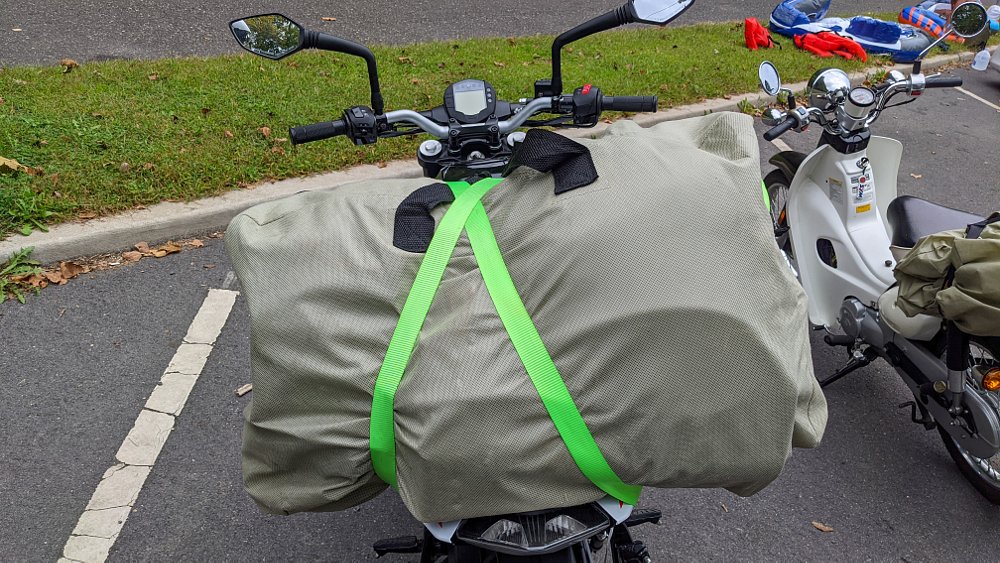
We’d carefully attached our kayaks to the bikes so that they didn’t cramp our seating too much, strap ends secured to prevent any chance of wheel or drivetrain entanglement. Rule One of moto-kayaking: Do not ride with an unsecured load or with any risk of straps getting snagged in moving parts. Rule Two: All keys go in zippered pockets.
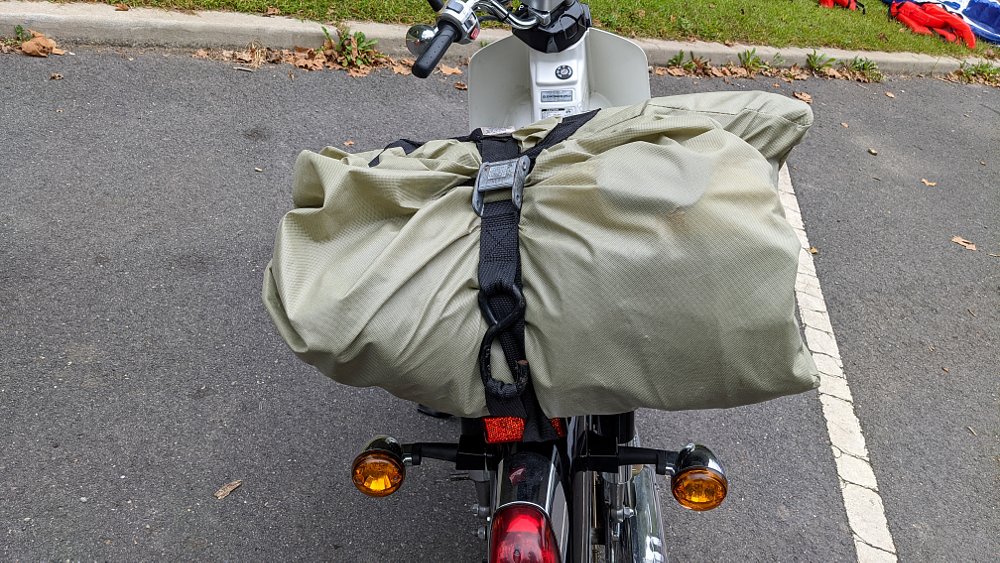
We hummed along to our access point, where we parked, unpacked, and started setting up the boats. Intex makes these things tough enough to ram rocks, meaning my ground cloth is probably unnecessary, but I use it anyway. I like that the pumps inflate on both strokes, so the kayaks are ready to go in a few minutes. Wondering how the pressure’s set without a gauge? Markings on the inflatable sections correspond with an included scale, so just stop pumping when they line up. Clip the skeg in, assemble the paddle, and you’re all set.
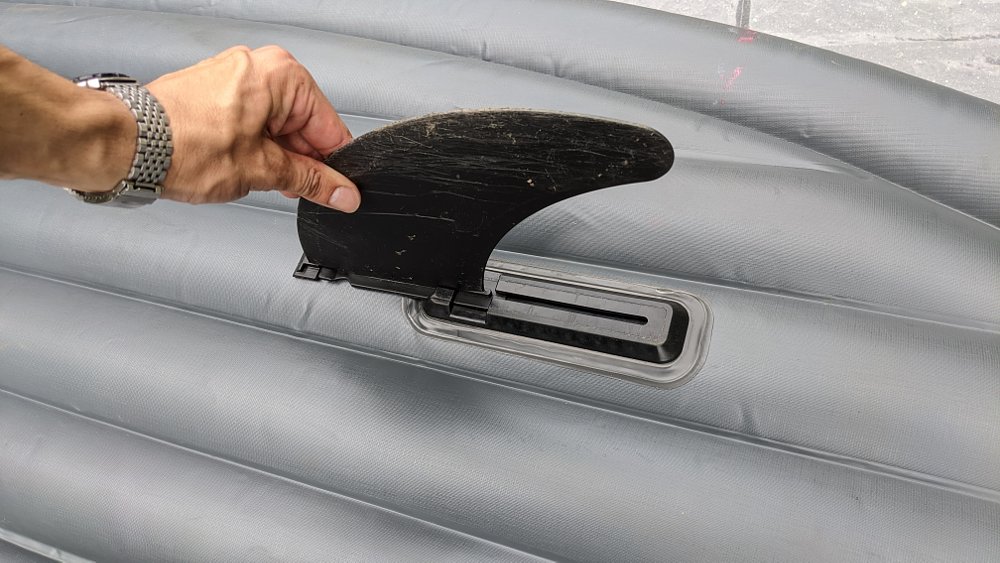
We locked up our bikes and stowed our gear in a secure spot. (You could bring everything in your boat with a dry bag if you wanted. Just don’t fall in!) Inflatable kayaks are super light and easily carried to the water, where we hopped in and started paddling up the river. A flotilla of tubers drifted past, giving small waves before going back to pretending it was still summer.
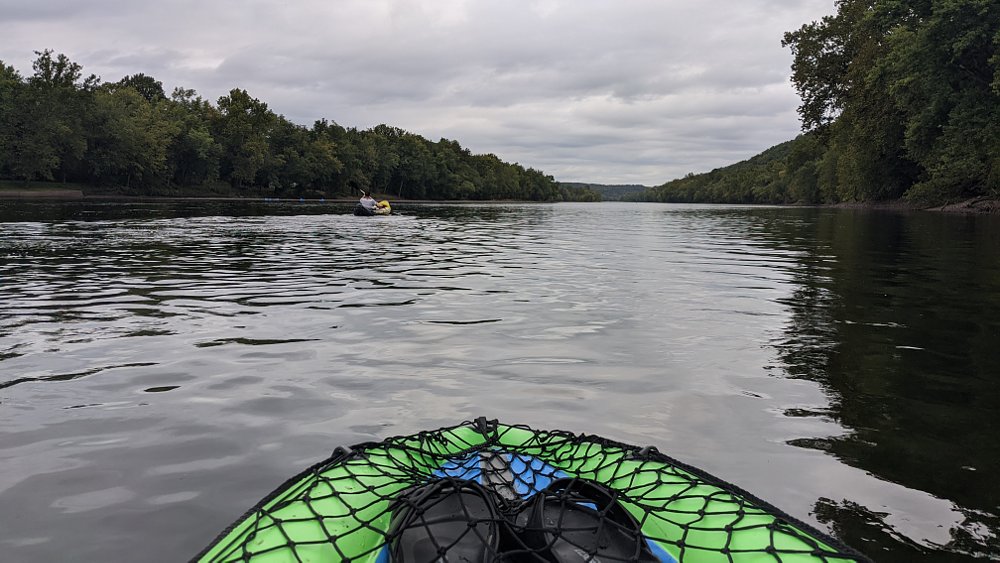
Early fall, before autumn goes full pumpkin-spice, is prime time for spotting wildlife. No, I don’t mean the tubers. The Delaware supports a diverse population of birds that feast along the shores or cruise overhead; everyone’s suddenly a birdwatching enthusiast when bald eagles are scooping dinner out of the water around you. I don’t think an Intex Challenger would survive an eagle strike.
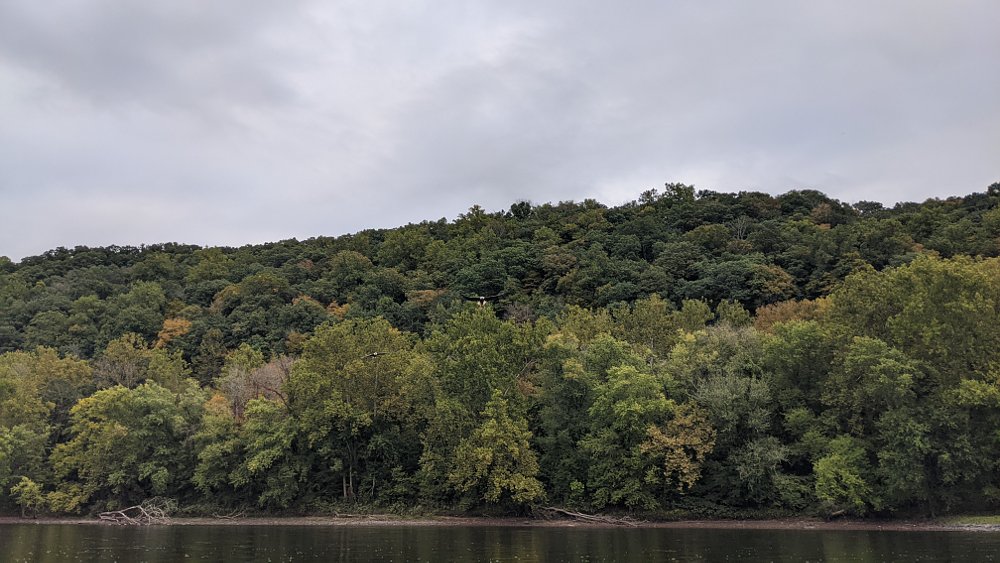
Here’s my quick review of the kayaks. The nine-foot K1 is a little droopy, not very “serious” when you see it on the water, and impressively stable even with cargo. (Max rated capacity is 200 pounds.) It’s all the kayak most beginners will need, plus it’s more compact than the K2, and it’s cheaper. The vinyl has taken some boneheaded abuse and isn’t showing any signs of damage. Both boats have multiple air chambers so a single puncture won’t deflate the whole craft.
The K2’s vibe is far more mature with its seating for two, which my brother uses for more leg room. His boat can haul way more gear than mine (400-pound capacity), and it seems to use a tougher material. It’s a foot wider and longer than the K1, translating to a packed size that the scooter didn’t seem to mind. The K2 does take a little more effort to paddle, and we both agree that nicer, four-piece paddles would be huge upgrades for both boats in the future. The trip continued upriver for some tiny island exploration. The last tubers going by looked chilly.
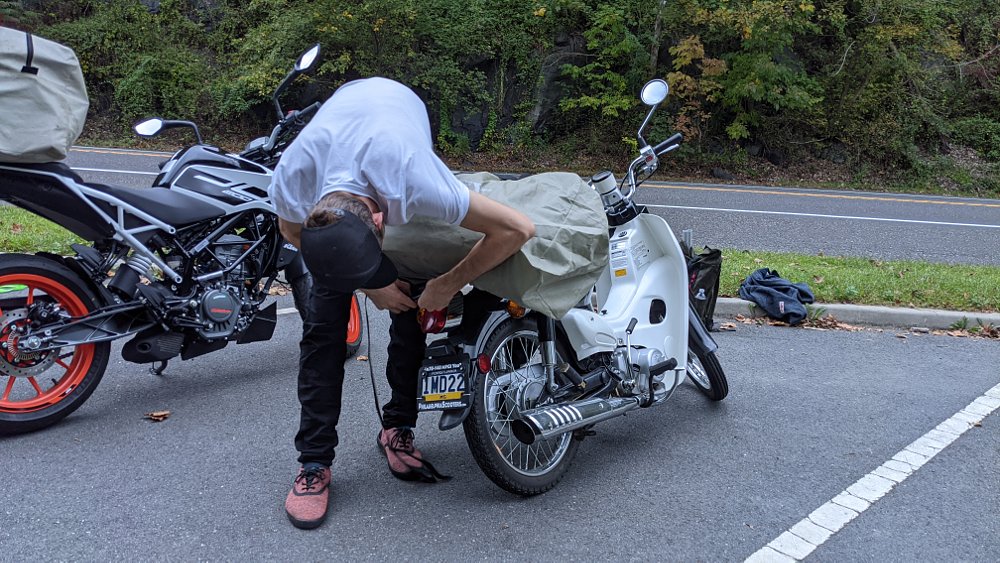
We planned to be packed up and on the road again before dark, so the boats turned around for an easy trip back to the bikes. Packing inflatables is about as simple as you’d think; they roll up into their bags, and if you roll them tightly enough, there’ll be room for the paddles, pump, and even the life preserver. Strap down, roll out. I can always finish the whole container of Thai takeout after moto-kayaking.
Try it, you might like it
Moto-kayaking hasn’t been about the most technical roads or fast water for us. We like the plain challenge of doing two fun things at once without having to take ourselves too seriously, because goofing around with pump-up kayaks and motorcycles in your own budget Top Gear challenge is infectious fun. Have a passenger seat or a luggage rack? You just might want to try moto-kayaking for yourself.




